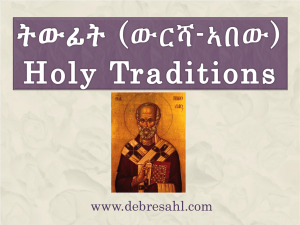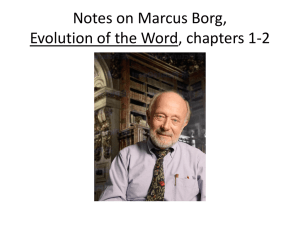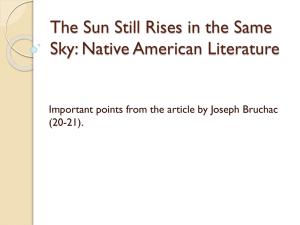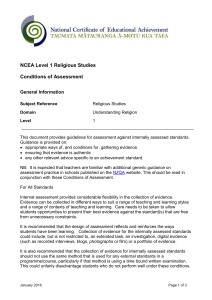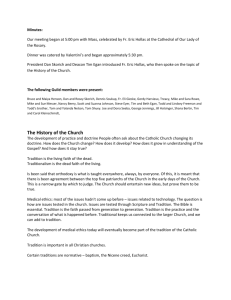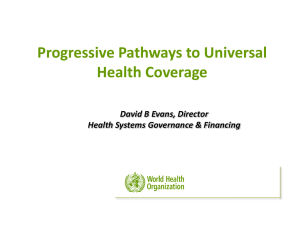Impact Investing and Catholic Social Teaching
advertisement
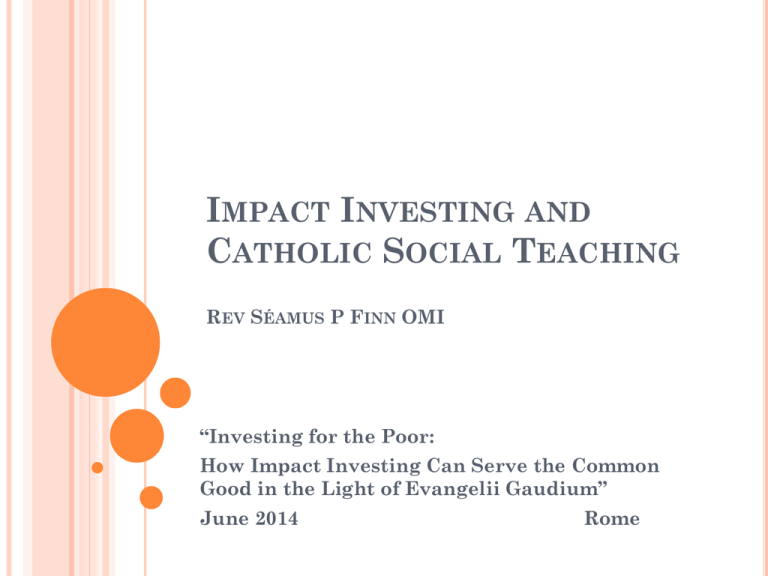
IMPACT INVESTING AND CATHOLIC SOCIAL TEACHING REV SÉAMUS P FINN OMI “Investing for the Poor: How Impact Investing Can Serve the Common Good in the Light of Evangelii Gaudium” June 2014 Rome OUTLINE BACKGROUND CONSIDERATIONS A BRIEF OVERVIEW OF THE TRADITION THE CONTEXT FOR THE GROWING TRADITION IMPACT INVESTING: OPPORTUNITY AND CHALLENGE BACKGROUND CONSIDERATIONS “Not to share one’s wealth with the poor is to steal from them and to take away their livelihood. It is not our own goods which we hold, but theirs”. St John Chrysostom “A great torrent rushes in thousands of channels through the fertile land. By a thousand different paths make your riches reach the homes of the poor. Wealth is like water that issues forth from the fountain. The greater the frequency with which it is drawn, the purer it is, while it becomes foul if the fountain becomes unused.” St Basil the Great “This is the rule of most perfect Christianity, its most exact definition, its highest point, namely, the seeking of the Common Good…” St John Chrysostom A BRIEF OVERVIEW OF THE TRADITION ROOTS OF THE CATHOLIC SOCIAL TEACHING (CST) A more equitable access, sharing and redistribution of resources and assets that are essential for life has long been considered a hallmark of the Christian/Catholic tradition. Beginning with the scriptures, the church fathers and the tradition and in conversation with philosophical and legal traditions the Catholic Social Teaching has developed a reasonable ethical, moral framework that offers guidance to believers and men and women of good will. LATE 19TH CENTURY/INDUSTRIALIZATION AS THE SOCIAL QUESTION The principle of justice has been the foundation from the beginning of the formal CST tradition when Pope Leo XIII called for the just and fair treatment of workers in terms of wages, safety and hours of labor. The context for the consideration of these topics in the late 19th century was the industrialization process that saw thousands of people migrating from their familial rural settings to urban factory centers of production. THE 1930’S/THE SOCIAL QUESTIONS In QA Pius XI examined more closely how the systems of capitalism, socialism and communism were able to respond to the pressing “social questions” while respecting human freedom and human dignity. It also examined the appropriate role of government in the guarantee of public order and the promotion of the common good by focusing on social justice and subsidiarity issues. SECOND VATICAN COUNCIL The formal documents of the CST tradition from Pacem in Terris and the Second Vatican Council through the most recent apostolic exhortation Evangelii Gaudium of Pope Francis have continue to build on the priorities that were looked at in the early years of the tradition however within a rapidly globalization process within a globally integrated financial system THE CONTEXT FOR A GROWING TRADITION THE CONTEXT FOR A GROWING TRADITION These reflections were within the broader conversations and concepts like “development and underdevelopment”; “First World, Second World, Third Word and Fourth World”; “Global North/ Global South” and distributive justice. More recent conversations about “sustainable development” have opened up new questions and debates and called for a reconsideration of the term “development” and “sustainable development In a parallel track beginning in the 1950’s and continuing each decade thereafter the UN has focused attention on the theme of the divide between rich and poor, north and south through “Decades of Development” perspective. The CST tradition entered boldly into that conversation through the encyclical “Populorum Progressio”, of Pope Paul VI. The effectiveness and efficiency of the transfer of resources through tranches of aid both official and unofficial has also been questioned. In addition more recently, especially after the financial meltdown, the capacity of the official sector to sustain their historic levels of aid has surfaced in numerous jurisdictions as governments experience serious revenue constraints in meeting their own budgets. IMPACT INVESTING: OPPORTUNITY AND CHALLENGE The Incubator role of the Church and Faith Communities and Organizations Other ideas and mechanisms have been created and implemented to supplement exiting revenue streams and to provide alternatives to the purely aid/charity paradigm; concessional credit and financing schemes as ably demonstrated in the micro finance and micro credit programs and more recently impact investing. The micro finance and micro credit programs as well as social investment funds that operated at a concessional rate of return to investors have made major contributions to human wellbeing and growth in different communities across the world. • Impact investing, the most recent arrival on the horizon has been born out of the aspiration of investors to put their assets to work to promote growth and development in certain sectors of economies while not losing capital or sacrificing return. • Sometimes this exposes the tension that exists between the more prophetic social justice communities and those responsibility for temporal affairs Opportunities Sub Sahartan Africa: • Private Equity investment in sub Saharan Africa increased 43% to $1.6 billion in 2013 from the previous year according to Emerging Markets Private Equity Association. • Investors are attracted by fast economic growth in some countries on the continent. • EG. The Ethiopian economy grew by an average 10.6% a year between 2004 and 2012 according to the World Bank Challenges Reputational Risk Partners Investing in “development” Precautionary Principle Glocalization


